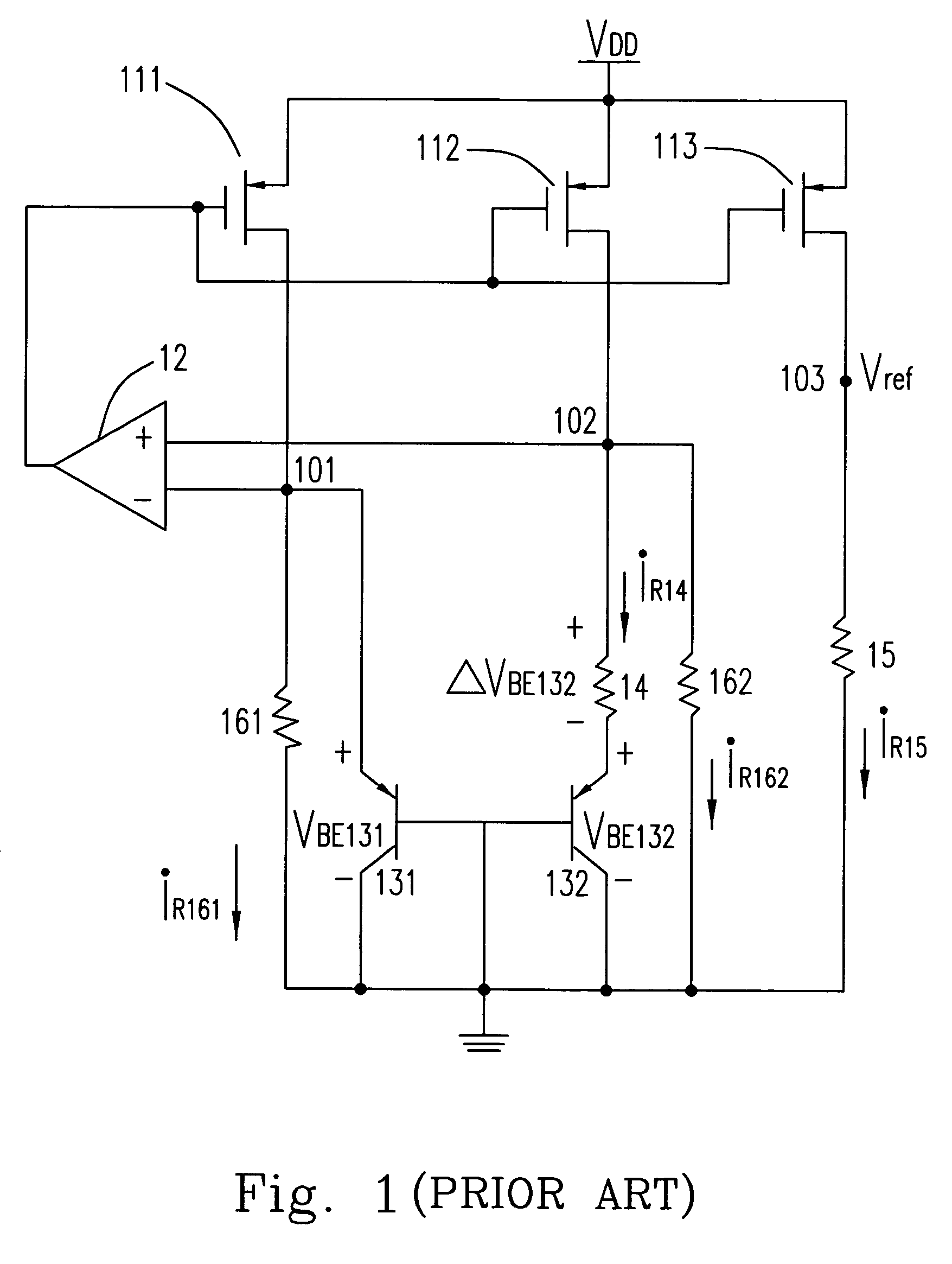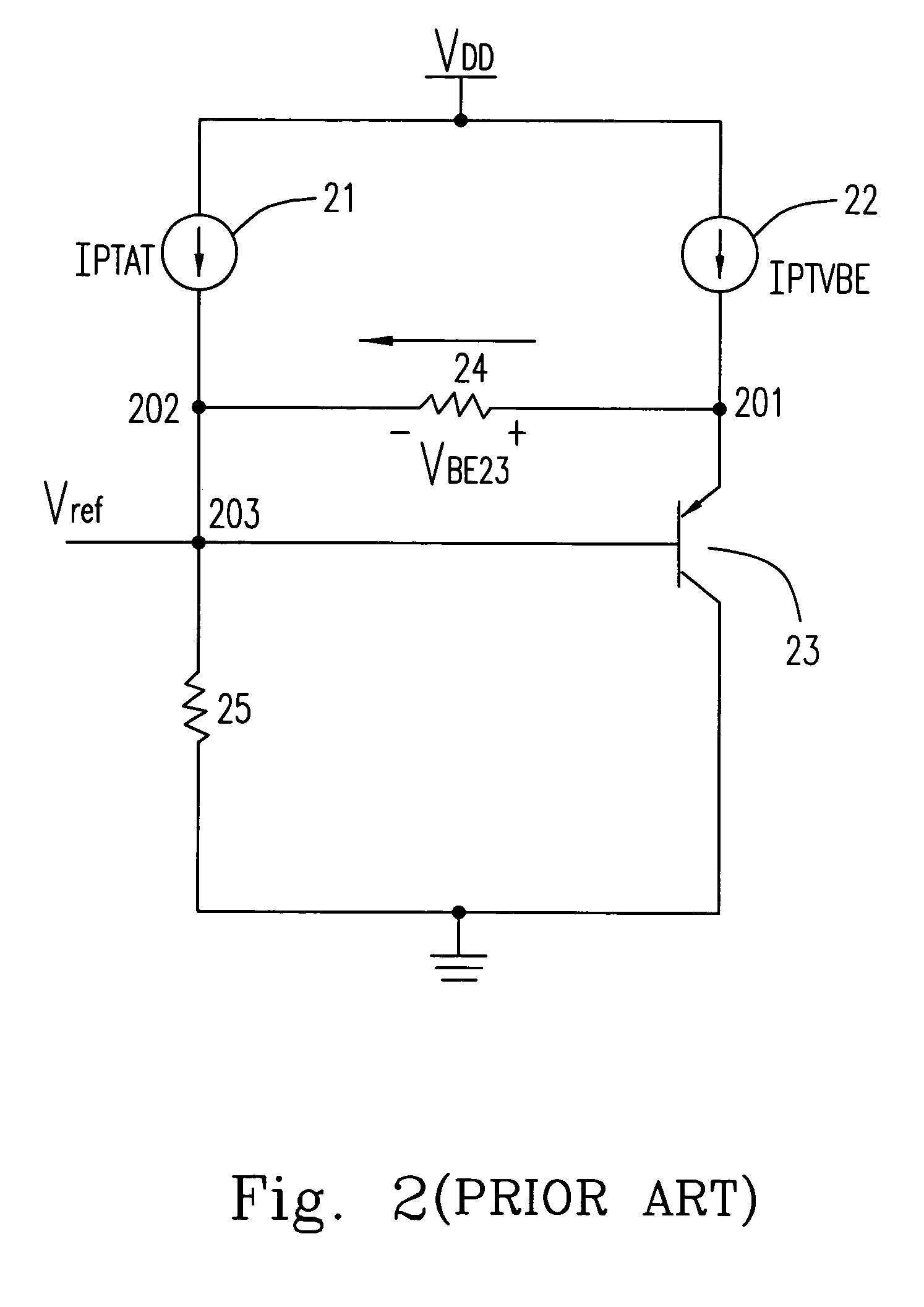Low-power bandgap reference circuits having relatively less components
a reference circuit and low-power bandgap technology, applied in the field of bandgap circuits, can solve the problems of bandgap circuits, unpractical drawbacks, and the need for relatively more complex circuit configurations, and achieve the effect of less components and same level of efficiency
- Summary
- Abstract
- Description
- Claims
- Application Information
AI Technical Summary
Benefits of technology
Problems solved by technology
Method used
Image
Examples
Embodiment Construction
[0040]Please refer to FIG. 4, it shows the schematic circuit diagram of the first preferred embodiment of the proposed low-power bandgap reference circuits of the present invention, which is built up according to the basic configuration of the third kind of lower power bandgap reference circuits (as shown in FIG. 3) each having the relatively less components and the same level of efficiency through employing two different sets of the current mirror circuits. In which, the proportional to absolute temperature (PTAT) current source includes: three same kind of P-type MOSFETs 411–413 (which constitute a first current mirror circuit), two NPN type BJTs 421 and 422, and three resistors 431–433, a square measure of p-n junction of the NPN transistor 421 equals to an integer factor multiplied by a square measure of p-n junction of the NPN transistor 422, and the integer factor is at least 2. Furthermore, the proportional to base-emitter voltage (PTVBE) current source includes: two same kin...
PUM
 Login to View More
Login to View More Abstract
Description
Claims
Application Information
 Login to View More
Login to View More - R&D
- Intellectual Property
- Life Sciences
- Materials
- Tech Scout
- Unparalleled Data Quality
- Higher Quality Content
- 60% Fewer Hallucinations
Browse by: Latest US Patents, China's latest patents, Technical Efficacy Thesaurus, Application Domain, Technology Topic, Popular Technical Reports.
© 2025 PatSnap. All rights reserved.Legal|Privacy policy|Modern Slavery Act Transparency Statement|Sitemap|About US| Contact US: help@patsnap.com



